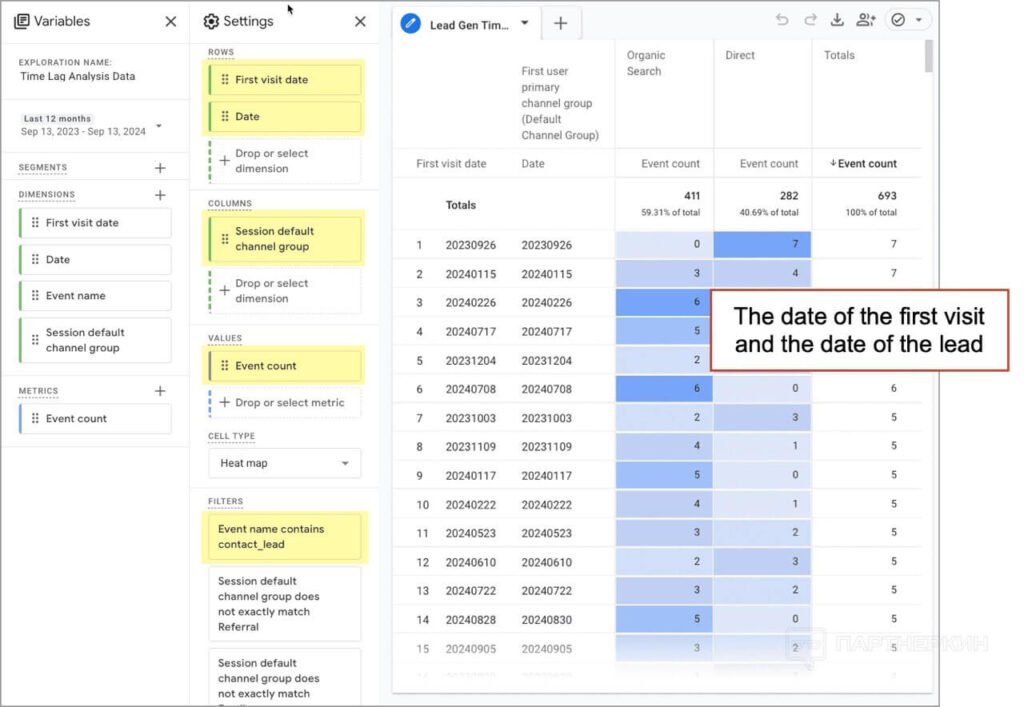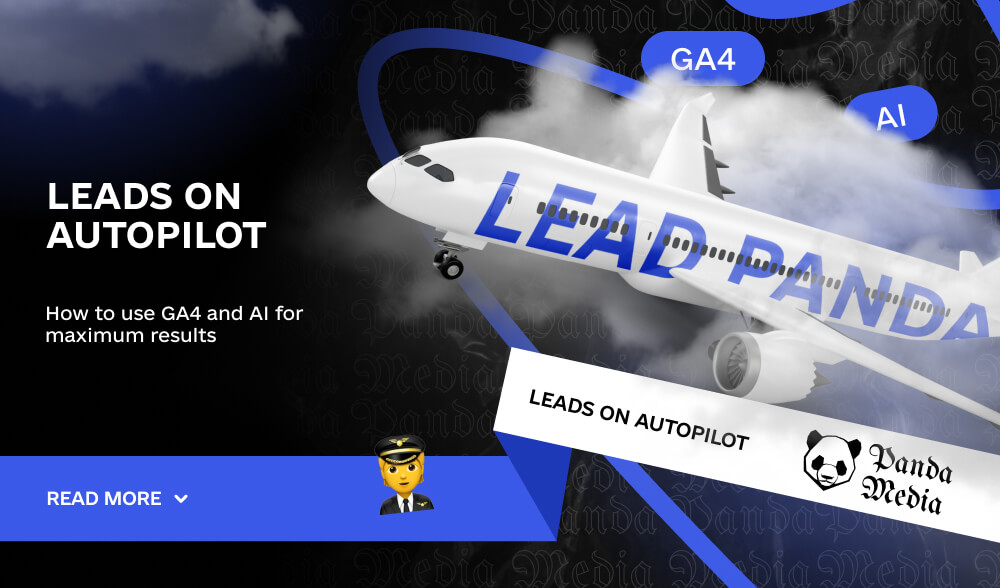Imagine knowing exactly what time of day your visitors are most ready to buy, and artificial intelligence automatically analyzes their behavior. Sounds cool, right? You get more leads with less time and resources. In this article, we will show how GA4 and AI tools like ChatGPT can help you not only track user behavior but also make effective marketing decisions that will lead to increased conversions.
How to generate leads by time of day and day of week
First, let’s determine what time of day and on what days the largest number of conversions on your website are. We’ll need data from GA4:
- Export sessions from GA4 in CSV format.
- Process this data and pass it to artificial intelligence for analysis using simple commands.
This approach works for any site that has a Thank you page, even if conversions have not been pre-configured.
*Thank you page(Thank you page) is a page that appears on the site after the user has completed a targeted action, for example, placed an order. Many marketers ignore this important element, but having a well-designed thank you page will help you stand out from the competition and benefit your business on a continuous basis.

Actions for automatic lead generation
- Open the “Page Path” report in GA4.
- Set a wide date range for a complete analysis.
- Find the URL of the thank you page.
- Add the “Date + time” parameter.
- Export data in CSV format.
- Clean up the file, leaving only the date and number of sessions (each session on the thank you page is a conversion).
- Upload this file to the AI.
- Give a command to create a visualization by day of the week and time of day.


Using the data
Now that you understand when your visitors are most likely to show interest in your services, you can implement several strategies to improve the effectiveness of your marketing practices:
- Send emails during periods of activity. Use the data to plan your campaigns. For example, if your analyzes show that most conversions happen on Monday mornings, you should send informational or promotional emails at this time to increase the chances of interaction.
- Optimize advertising budgets. Increase advertising spending during periods of high conversions. For example, if you find that there is an increase in interest on weekends, allocate more funds for social media advertising or contextual advertising on these days. At the same time, during periods of low activity, reduce spending to save your budget.
- Content personalization. Use data to create personalized content that matches the interests and behavior of visitors. For example, offer special discounts or promotions based on their previous visits or purchases.
- Analyze campaign performance. After implementing these strategies, constantly analyze their effectiveness. Measure how changes in email sending time and budget affected conversions and adjust your actions based on the results.
- Test new strategies. Don’t be afraid to experiment with new approaches. For example, try different ad formats or change the time of your emails to find the best option for your audience.
Using this data, you will not only increase conversions, but also ensure greater customer satisfaction and loyalty for future sales.
Conversion time delay analysis
The next step is to find out how long it takes for visitors to convert into leads. With the GA4 report, you can analyze how long it takes users from the first visit to the moment of conversion, adding the source of traffic as well.

Algorithm of actions:
- Go to GA4
- Log in to your GA4 account and open the reporting interface.
- Select the “Research” report
- Find the Explore section and select it to create a custom report.
- Add the necessary parameters
- Add the following parameters to the report:
- “Date of first visit”
- “Conversion date”
- “Traffic source”
- “Number of events” (this is the number of conversions that have occurred).
- Customize filters
- Add filters to display only those events that correspond to conversions (for example, form submission or purchase).
- Export data
- After configuring the parameters and filters, export the data in CSV format by clicking on the download icon in the upper right corner.
- Process the file
- Open the CSV file, delete unnecessary lines and leave three key columns: “Date of first visit”, “Conversion date”, and “Traffic source”.
- Transfer data to artificial intelligence
- Upload the processed file to an artificial intelligence tool for further analysis.
- Conduct the analysis
- Use artificial intelligence to determine the average time between first visit and conversion. You can also conduct additional analysis to compare results between different traffic sources.
- Create a visualization
- Based on the data you’ve obtained, ask the artificial intelligence to create a visualization, such as a chart or graph, to show the results clearly.
- Use the results to optimize
- Use the information to optimize your marketing campaigns, taking into account conversion times and the most effective traffic sources.
Additional recommendations
Often, leads convert during the first visit to the site. This is not surprising, as interested users quickly perform targeted actions. We recommend that you focus on optimizing your homepage, as many leads are generated at the very beginning of interaction with your website.
By creating a GA4 report that analyzes the user journey with the thank you page as the endpoint, you can find that many leads go straight from the homepage to the application form. Even if your sales cycle is complex, the lead generation process can still be fast and efficient. That’s why it’s important to pay attention to homepage optimization, as many leads convert from the first visit. And remember: when customers are ready to buy, they will definitely contact you.


